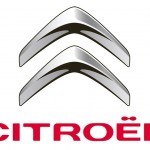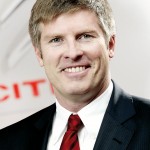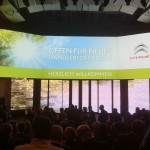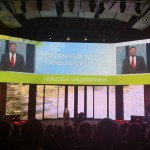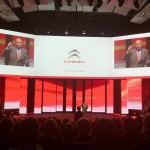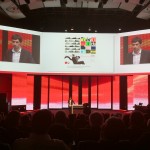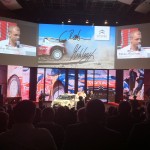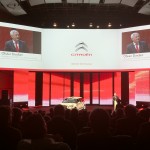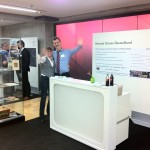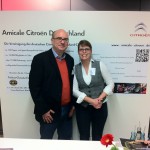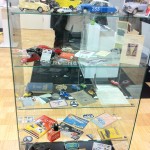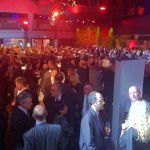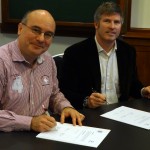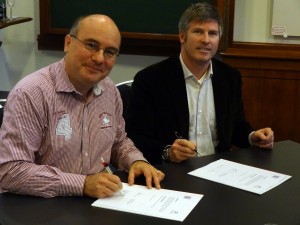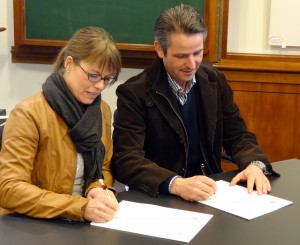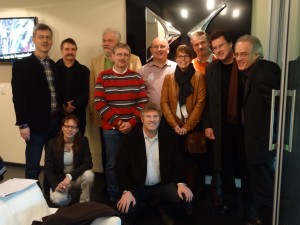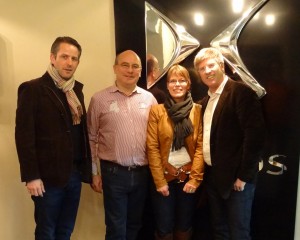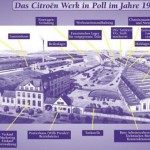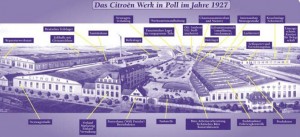
Citroën in Köln 1927
(English below)
In diesem Jahr gab es etwas ganz besonderes zu feiern. Oder sollte man sagen, zwei besondere Themen standen auf der Agenda des zweiten Presse- und Business-Lunchs, zu dem die CITROËN Deutschland GmbH mehr als einhundert Vertreter von Politik, Wirtschaft und Medien am 13. Februar 2012 in die Kölner “Design Post” geladen hatte.
Am 15. Februar 1927, also fast genau vor 85 Jahren, wurde die Produktion von Fahrzeugen durch die damals neu gegründete Citroën Automobil AG begonnen. Die Amicale Citroën Deutschland berichtete bereits über die Anfänge der traditionsreichen Deutschlandzentrale.
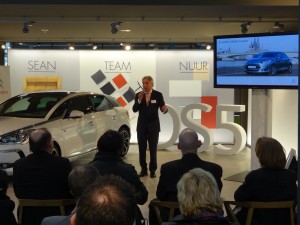
Jürgen Roters, Oberbürgermeister von Köln
Doch im Zentrum des Interesses stand aus unserer Sicht der mit Spannung erwartete Besuch des Kölner Oberbürgermeisters Jürgen Roters. Zusammen mit seiner Entwicklungsdezernentin Ute Berg als Repräsentanten der Stadt unterstrich er erneut eindringlich, daß der Erhalt des Standorts aus ihrer Sicht hohe Priorität geniesst. Neben den Vorzügen, die der Wirtschaftsstandort biete, stellte Jürgen Roters fest: „Citroën Deutschland kann sich darauf verlassen, dass sich Köln mit aller Kraft dafür einsetzt, dass das Flaggschiff Citroën in der Stadt Köln bleibt.“ Die Zusammenarbeit zwischen der Stadt und dem Unternehmen auf der Suche nach einem geeigneten Standort sei sehr gut.
Citroën wird sich wohl von seinem jetzigen Hauptsitz an der ehemaligen Nikolaus-Gross-Strasse (jetzige André-Citroën-Strasse) in Porz-Westhoven trennen, und in Köln – mit Unterstützung der Stadt – nach einem anzumietenden Gebäude suchen, das die Mitarbeiter von Citroën und Peugeot aufnehmen könnte. Da es sich um eine reine Vertriebsorganisation handelt und weder Logistik- noch Produktionskapazitäten notwendig sind, sollte sich die Suche nach einem repräsentativen Bürokomplex vergleichsweise einfach gestalten.
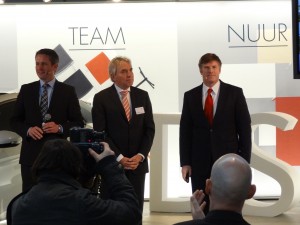
v.l.n.r. Stephan Lützenkirchen, Jürgen Roters, Holger Böhme
Das als Filetstück angesehene jetzige Gelände mit rund 38.000 qm Fläche (Citroën ist seit den 50er Jahren im Besitz dieser Immobilie) soll nicht ausgebaut werden – Citroën sei schließlich kein Immobilienunternehmen, so Deutschland-Geschäftsführer Holger Böhme. Im Rahmen der Restrukturierung und Optimierung könne man davon ausgehen, daß das Grundstück veräußert werden wird.
Auch Saarbrücken bemühe sich um eine attraktive Positionierung im Rennen um die Wahl des geeigneten Standorts. Darauf angesprochen äußerte sich OB Roters, man sehe zwar die “Konkurrenz” aus dem Saarland, hoffe aber, das bessere Angebot für die Wahl zu Gunsten von Köln der Geschäftsführung unterbreiten zu können.
Eine entgültige Entscheidung solle in den nächsten Wochen getroffen werden. Die Amicale Citroën Deutschland wird berichten.
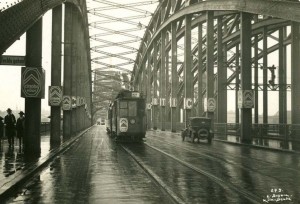
Werbung für Citroën in Köln
Darüber hinaus stellte Citroën einen ambitionierten 3-Jahres-Plan bis zum Jahr 2014 vor. Dann will die Doppelwinkel-Marke hierzulande 100.000 Fahrzeuge verkaufen. Zum Vergleich: Im vergangenen Jahr 2011 wurden 66.711 verkauft. Wie Böhme sagte, seien drei Prozent Marktanteil beim Neuwagen-Verkauf das Ziel. Schon im laufenden Jahr 2012 sollen 2,6 Prozent erreicht werden (2011: 2,3 Prozent).
Interessant war die Aussage, daß die derzeitige DS-Linie nach Angaben von Böhme rund 60 Prozent Neukunden verzeichnet (die bislang noch nie einen Citroën neu erworben haben) und damit einen Spitzenplatz in der Statistik einnehmen. Im Jahr 2011 machte sie 13,8 Prozent der Citroën-Verkäufe in Deutschland aus – und 20 Prozent im laufenden Jahr sind angestrebt. Neben DS3 und DS4 wird ab 3. März 2012 das neue Modell DS5 eingeführt, von dem 10 Prozent der Jahresproduktion von 40.000 Fahrzeugen, also 4.000 nach Deutschland ausgeliefert werden.
Mit dem DS5 wird auch besonders Wert auf den Ausbau des Leasinggeschäfts gelegt. Neben konkurrenzfähigen Leasingraten sind attraktive Restwertprognosen entscheidend für die Wahl des DS5 aus Firmenleasing-Sicht. Holger Böhme: “Wir machen uns hier nichts vor. Vielleicht müssen wir nicht nur vergleichbare Raten wie unsere Konkurrenz bieten, sondern noch einen Tick besser als unsere Wettbewerber sein.”
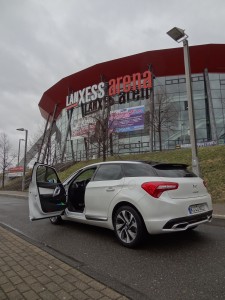
Die kurze Probefahrt mit dem neuen Topmodell DS5 gestaltete sich überwiegend positiv. Wir konnten die neue Diesel-Full-Hybrid-Technologie Hybrid4, die erstmals im Citroën DS5 zum Einsatz kommt, einen Tag vor der offiziellen nationalen Pressepräsentation testen. Der Mix aus Diesel-Antrieb an der Vorderachse und Elektromotor-Antrieb an der Hinterachse kann in verschiedenen Modi (“Auto”, “ZEV” (Zero Emission Vehicle), “4WD” (Allradantrieb), “Sport” (schnellere Beschleunigung, dynamische Gangwechsel)) vorgewählt werden, wird aber gegebenenfalls nachgeregelt, wenn z.B. Anforderungen durch Gaspedal oder manueller Wahl des ansonsten automatisch abgestimmten 6-Gang-Getriebes vom Fahrer gewünscht werden.
Das rein elektrische Fahren bei entspannter Fahrweise ist mit Ausnutzung der Stop-Start-Automatik und bis zu knapp 70 km/h möglich – die Batterie reicht dann für rund 6km. Die Batterie wird bei Anlassen des Motors und auch beim jedem Abbremsen wieder geladen. Geht der Batterie der Saft aus, schaltet das System selbstständig wieder in den Auto-Modus.
Im Bereich zwischen 70-130 km/h können beide Antriebe gekoppelt werden und ermöglichen so einen Zwischenspurt mit Abruf einer Leistung bis zu 147kW/200PS. Oberhalb von 130 km/h ist der Dieselantrieb die optimalste Lösung und lädt dann wieder die mit Batterie auf, die leider noch nicht als Plug-In-Lösung ausgeführt ist (man kann also die im Heck untergebrachte Zusatzbatterie nicht extern laden, das kommt erst ca. 2014). Auf die Hochleistungsbatterie und ihre Komponenten gibt es übrigens wie beim C-Zero 5 Jahre Garantie – sicherlich beruhigend für die Käufer dieser noch recht jungen Technologie.
Im Mix seien 3.8L/100km und ein CO2-Wert von unter 99g/km möglich – dank aufwendiger elektronischer Kraftfluss-Regelung, die Thomas Widmann, der Technik-Experte der CDG, in seiner Präsentation schlüssig und zugleich beeindruckend vorstellte. NB: Endlich jemand, der komplizierte Technologie verständlich, nachvollziehbar und zugleich begeisternd darstellen kann – “well done”! 🙂
Das nach unserem Empfinden allerdings sehr straff abgestimmte Fahrwerk reicht Strassenschäden aller Art schnell an seine Fahrgäste weiter. An dieser Stelle vermisst man ein wenig den Federungskomfort des C5…
Der Innenraum (Zugang über ein Keyless Türschloss-System) wird dem im Prospekt geahnten edel ausgeführten Anspruch weitestgehend gerecht – man fühlt sich in einer Ausstattung deutlich jenseits der 40-50.000 Euro Kaufpreis untergebracht. Das über den Deckenschalter ausfahrbare Head-Up-Display ist auch im Sonnenlicht gut ablesbar.
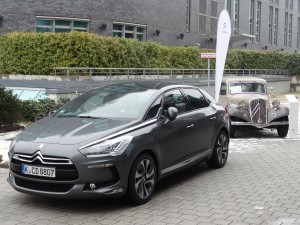
Nicht gefallen hat die nicht blendfreie Uhr, die nicht aus jedem Winkel gut ablesbar ist, sowie die deutlich sichtbaren blauen Abfärbungen von Jeansfarbstoffen auf den Sitzkanten der schwarz-weissen Sitze des eigentlich noch jungfräulichen Wagens – wer nicht weisse Hosen trägt, dem sei von dem weißen Leder abgeraten!
Ob die rund 6.500 Euro teurere Variante des Hybrid4 mehr als 15 Prozent Anteil am DS5 übersteigen wird, bleibt abzuwarten. Sicherlich wird der Citroën DS5 HDi 165 der meistverkaufte seiner Art sein.
Der Vergleich zum Audi drängt sich unmittelbar auf. Der Weg zum Premiumhersteller wird mit dem DS5 zum ersten Mal greifbar.
En avant, Citroën!
Mehr zur Technologie des DS5:
http://www.citroen.de/citroen-ds5/technologie/
—–
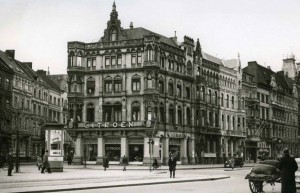
Citroën meets Design: 2nd Press- and Business-Lunch
This year, for Citroën lovers in Germany there is reason to celebrate something special. Or should we say that two special reasons were on the agenda of the second press and business lunch that Citroën Germany celebrated on February 13th, 2012 and where more than one hundred representatives from government, business and media attended in a very special location in Cologne, the “Design Post”.
It was on 15 February 1927, almost exactly 85 years ago, when the production of vehicles by the then newly formed “Citroën Automobil AG” had started in Cologne. The Amicale Citroën Deutschland has already reported on the beginnings of the French car manufacturers history of its German subsidiary.
But in the center of our interest was the much-anticipated visit to the Lord Mayor of Cologne, Mr. Jürgen Roters. Together with its city development councillor, Mrs. Ute Berg, both representatives of the city once more emphasized that the preservation of the Citroen headquarters in Cologne enjoys high priority in their view. Roters stated: “Citroën can rely on that the Cologne city government will support them with all our might to ensure that the headquarters of Citroën will stay in the city of Cologne.” The collaboration between the city and the company is well progressing, stated Roters, when looking for a suitable location to host the branch offices.
Most likely, Citroën will sell off its present headquarters at Andre-Citroën-Strasse in Cologne Porz-Westhoven, and is aiming to find and rent a new site in Cologne – with support from the city – to cater for the employees of Citroën and also Peugeot rom Saarbrücken. Since the subsidiary is set as a pure sales organization and is neither in needs for logistical nor production capacity, the search for a representative office complex spould work out comparatively easily.
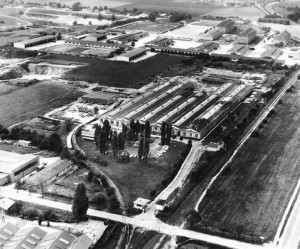
The current premium site with some 38,000 square meters (Citroën owns the ground and facilities since the 50s) should not be expanded – Citroën is ultimately not a real estate company, stated Citroen Germany’s managing director Holger Boehme. As part of the restructuring and optimization it can be assumed that the property will be sold.
Saarbrücken also seeks to be an attractive position in the race for the selection of a suitable site. When asked, Mayor Roters said that he well sees the “competition” from the Saarland, but hopes to be able to provide the better offer in favor of Cologne.
A final decision would be taken in the next few weeks. Amicale Citroën Deutschland will keep you updated.
In addition, Citroën presented before an ambitious 3-year sales plan until 2014 EOY. The goal is to reach an annual sales mark of 100,000 sold vehicles. For comparison, in 2011 66.711 were sold. Country manager Böhme also stated to have an ambition to reach three per cent market share. The ambition for 2012 is 2.6 percent (2011: 2.3 percent).
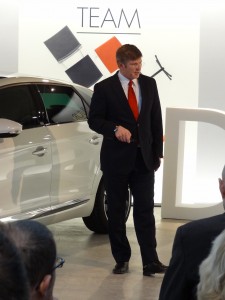
Holger Böhme, Geschäftsführer Citroën Deutschland GmbH
Interesting was the statement of Holger Böhme that the current DS line attracts about 60 percent of new customers (who have never yet bought a new Citroën) and thus assume a leading position in the statistics. In 2011, the DS line accounted for 13.8 percent of Citroën sales in Germany – and 20 percent are sought in the current year. In addition to DS3 and DS4, in Germany the new DS5 flagship model will be available from 3 March 2012, of which 10 percent of the annual production of 40,000 vehicles, ie 4000 units will be delivered to Germany.
With the DS5, more emphasis is put on the expansion of the car leasing business. In addition to competitive lease rates are attractive remaining car value crucial to the choice of the DS5 from leasing companies resp. employees chosing a car from an available range. Holger Boehme: “We have to be very realistic. Perhaps we need to not only offer comparable rates to our competitors, but still a tad better than other car manufacturers.”
The short test drive with the new flagship DS5 proved overwhelmingly positive. We were able to test the new diesel full-hybrid technology “Hybrid4”, for the first time implemented in the Citroen DS5, and one day before the official national press presentation.
The mix of diesel power on the front axle and the electric motor drive on the rear axle can be used in different modes (“Auto”, “ZEV” (Zero Emission Vehicle), “4WD” (four wheel drive), “Sport” (faster acceleration, dynamic gear changes) can be preselected), but is optionally readjusted if, for example the driver choses differently, eg. by pushing the gas pedal or eg. manual overriding the otherwise auto-tuned 6-speed automatic gearbox.
The purely electrical “ZEV” drive in a relaxed mode of operation benefits also from the stop-start system and can be solely propulsing the car up to nearly 70 km/h – then the battery will last for approximately 6km. The battery is charged when starting the diesel engine, as well as when decelerating the car. If the battery is drained, the system automatically switches back to “auto” mode.
In the region between 70-130 km/h, both drives can be joined depending on the driving conditions, allowing an intermediate sprint with access to a power boost up to 147KW/200PS. Above 130 km/h, the diesel engine is the most efficient solution, and then charges the battery again which is designed unfortunately not as a “plug-in” solution (one can not charge the battery by external power supply – this feature to come 2014 we were told). To support potential Hybrid4 buyers in their decisiontaking to go for this relatively young technology, Citroën grants a 5-year warranty on the high-performance battery and its components (like also for the C-Zero).
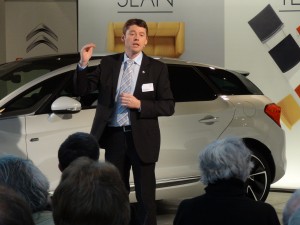
Thomas Widmann, Citroën Deutschland GmbH
The average consumption of the Hybrid4 is set to be 3.8L/100km and a CO2 pollution of 99g/km – thanks to extensive electronic power flow control, which Thomas Widmann, technology expert at CDG, impressively explained in his attractive and excellent presentation about the car’s newest technology features.
When test driving the DS5 Hybrid4, we enjoyed very much the new mix of technologies but also felt the rather direct suspension which transmits any road damage right to its passengers – we miss a bit the suspension we’re used to enjoy in the C5 model…
The interior (access via a keyless door lock system) is carried out along the expectations we had when studying the first press pictures the weeks before – you feel riding a luxury car well above the sales price of 40-50.000 Euro. The use of the switches above our heads to trigger the head-up display and sun roofs certainly is a well-designed piece. The head-up display at the front is bright enough to be well perceived also in difficult sunlight conditions.
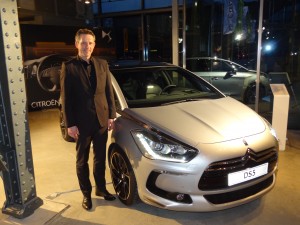
Stephan Lützenkirchen, CDG Presse
What we did not like was the non-glare-free clock that is not easy to read, and the clearly visible blue discoloration of denims dyes on the seat edges of black and white seats in the fact still virgin car – those who typically do not wear white pants should not aim for white leather interior!
Whether the 6,500 Euro more expensive version of the Hybrid4 exceed more than 15 percent share of the DS5, will have to be proven first. Certainly, the Citroën DS5 HDi 165 is our best guess for the best-selling of the DS5 variants.
Having experienced the DS5 for a few minutes, our immediate thoughts were the now adequate comparability with Audi models. Citroën’s ambition to create cars in the premium market segment is to my perception the first time met with the DS5.
En Avant, Citroën!
More on the technology of the DS5:
http://www.citroen.com/citroen-ds5/technologie/
